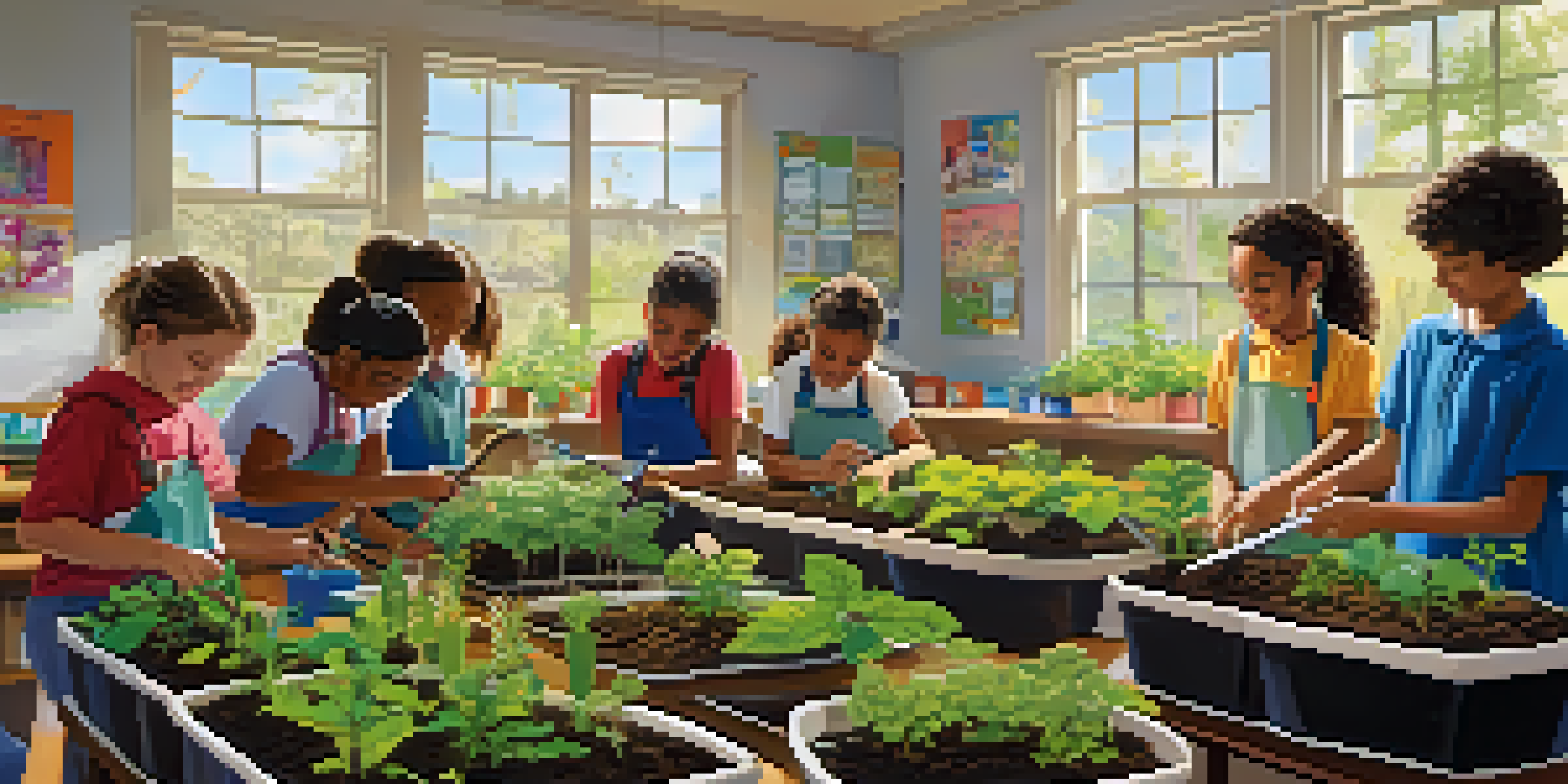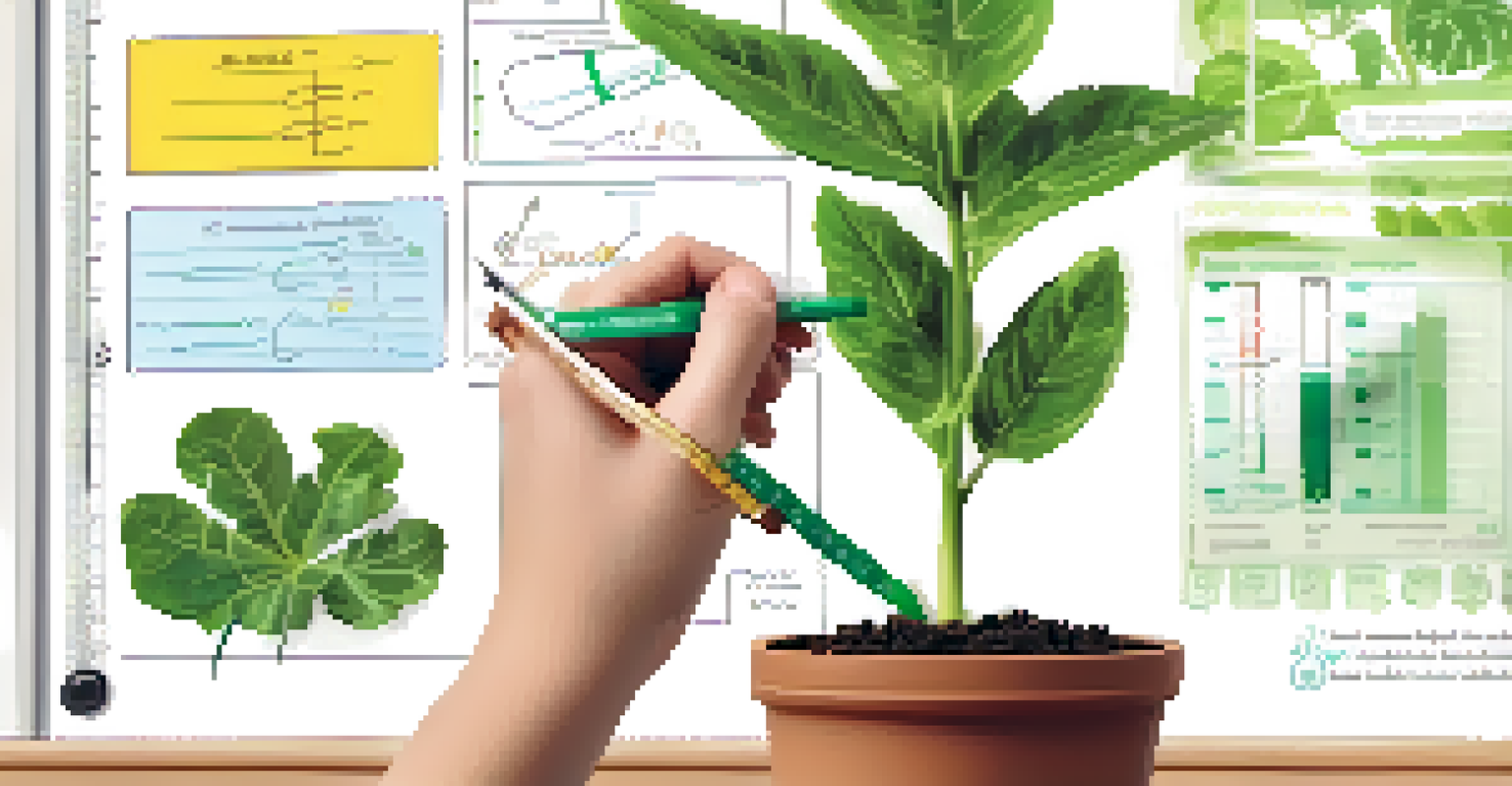Integrating Plant Science into K-12 Curriculum Effectively

Understanding the Importance of Plant Science Education
Plant science is fundamental to our understanding of ecosystems, agriculture, and sustainability. By integrating it into K-12 education, we equip students with knowledge that is essential for their future. This subject not only fosters curiosity about the natural world but also highlights the importance of plants in our daily lives.
The greatest threat to our planet is the belief that someone else will save it.
For instance, consider how vital plants are for food production, air quality, and even medicine. Engaging students with real-world applications of plant science can ignite their passion for biology and environmental stewardship. This foundational knowledge encourages them to think critically about the challenges our planet faces.
Ultimately, educating young minds about plant science can inspire the next generation of scientists and environmental advocates. The earlier we introduce these concepts, the more likely students are to carry this knowledge into adulthood, fostering a more sustainable future.
Curriculum Development: Aligning with Standards
To effectively integrate plant science into the K-12 curriculum, it’s crucial to align lessons with educational standards. This ensures that students not only learn about plants but also meet required learning goals. Teachers can reference national and state science standards to find relevant benchmarks for their lessons.

By incorporating plant science topics that fit within these standards, educators can create engaging lesson plans that satisfy curriculum requirements. For example, lessons on photosynthesis can be tied to broader concepts in biology and environmental science. This alignment helps in creating a cohesive learning experience.
Importance of Plant Science Education
Integrating plant science into K-12 education fosters curiosity and equips students with essential knowledge for a sustainable future.
Moreover, aligning with standards allows for easier assessment of student understanding. When students grasp the importance of plant science within the context of their overall education, it enhances their learning experience and prepares them for standardized tests.
Hands-On Learning: Engaging Students in Plant Science
One of the most effective ways to teach plant science is through hands-on learning experiences. Activities like planting seeds, maintaining a classroom garden, or conducting simple experiments can make the subject come alive for students. This kinesthetic approach to learning encourages exploration and curiosity.
Education is the most powerful weapon which you can use to change the world.
For example, students can observe the growth of plants over time, measuring changes and documenting their observations. This not only reinforces scientific concepts but also builds critical thinking skills. Engaging with plants directly allows students to form a personal connection to the material.
Additionally, hands-on projects can cater to different learning styles, ensuring that all students have the opportunity to thrive. By making plant science interactive, we can foster a deeper understanding and appreciation of the natural world.
Utilizing Technology to Enhance Plant Science Education
In today’s digital age, technology plays a pivotal role in enhancing plant science education. Tools like interactive apps and online resources can provide students with a wealth of information at their fingertips. Incorporating technology into lessons can make learning more engaging and accessible.
For instance, virtual field trips to botanical gardens or farms can broaden students' horizons without leaving the classroom. Students can explore diverse ecosystems and learn about various plant species through multimedia presentations. This not only enriches their understanding but also sparks interest in further exploration.
Hands-On Learning Engages Students
Experiential activities like planting seeds and classroom gardens make plant science tangible and exciting for students.
Moreover, technology can facilitate collaboration among students. Using platforms for project-based learning, students can work together to research and present their findings on plant science topics, fostering teamwork and communication skills.
Interdisciplinary Approaches: Connecting Plant Science to Other Subjects
Integrating plant science with other subjects can create a more holistic educational experience. For example, linking plant biology with art can lead to projects like botanical illustration, allowing students to express their understanding creatively. This interdisciplinary approach makes learning more relevant and enjoyable.
Additionally, connecting plant science with subjects like math can involve measuring growth rates or analyzing data from experiments. These connections help students see the practical applications of what they’re learning, making the material feel more connected to their lives.
Such integrated lessons not only enhance engagement but also encourage critical thinking. As students draw connections between different subjects, they develop a deeper understanding of how plant science impacts various fields, from nutrition to environmental policy.
Community Involvement: Partnering with Local Organizations
Involving the community in plant science education can enrich the learning experience for students. Local botanical gardens, agricultural extension offices, or environmental organizations can provide valuable resources and expertise. Partnering with these organizations allows students to engage with plant science in meaningful ways.
For example, field trips to local farms can give students firsthand experience with sustainable agriculture practices. Guest speakers from community organizations can share their knowledge and inspire students to get involved in local conservation efforts. These experiences help bridge the gap between classroom learning and real-world application.
Community Involvement Enriches Learning
Partnering with local organizations enhances plant science education by providing real-world experiences and expertise.
Furthermore, community involvement can foster a sense of responsibility and stewardship among students. By understanding the local environment and the role of plants within it, students can develop a commitment to protecting and preserving their surroundings.
Evaluating Success: Assessing Plant Science Learning Outcomes
To ensure the effectiveness of plant science integration, it’s essential to evaluate learning outcomes. Educators can use various assessment methods like quizzes, projects, and presentations to gauge student understanding. This feedback helps identify areas of success and opportunities for improvement.
For example, after a unit on plant growth, teachers could assess students through a hands-on project where they grow a plant and present their findings. This not only tests their knowledge but also reinforces the practical skills they’ve learned throughout the unit.

Regular assessments can guide curriculum adjustments and ensure that students are meeting learning objectives. By continually evaluating their approach, educators can create a dynamic learning environment that adapts to the needs of their students.